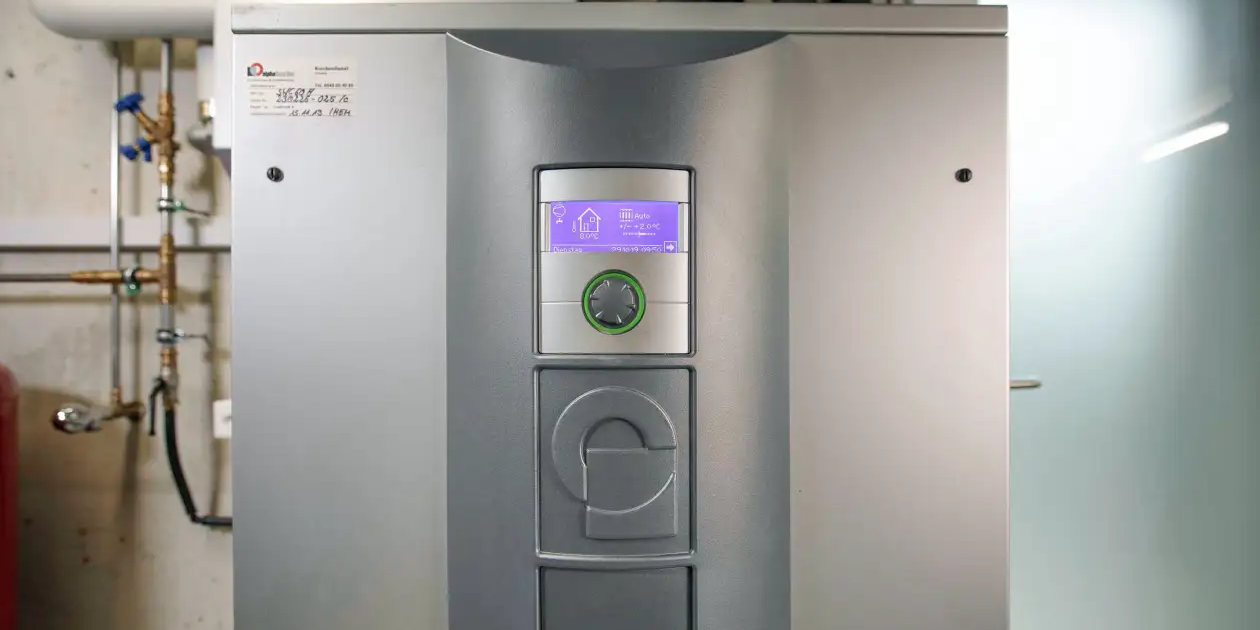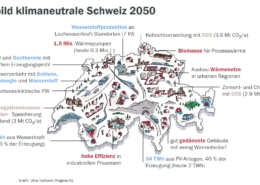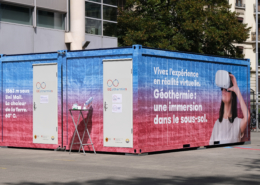Tips for more efficient ground source heat pumps
For multi-family buildings, ground source heat pump systems are generally an efficient and climate-friendly heating solution. The investment costs are high, but the operating costs are low, so you save money in the long term. This guide shows you how to improve the efficiency of your system and optimize the operation of your ground-source heat pump through seasonal regeneration.
Solar systems promote regeneration
As a general rule, the deeper the geothermal probe, the higher the temperatures it draws from the ground in all seasons because the temperatures underground are relatively constant. And the higher the temperatures the pump captures, the less electricity it will need to heat the rooms. In areas where multiple probes are buried close together, the ground can cool over the years, which can affect the efficiency of the system, sometimes to the point of having to suspend operations. Seasonal regeneration is a way to combat this problem. Seasonal reclamation is the process of injecting heat back into the ground during the summer months. You can support this process with a solar system: if you inject the excess heat from your solar system into the ground in the summer using probes, your heat pump will require less electricity in the winter. Would you like to know more about this? Then visit our solar installations
page to learn how to generate your own electricity.
There are several ways to benefit from regeneration: instead of using solar energy, you can use the outside air or the waste heat from the building.
However, regeneration is only cost-effective for multi-family buildings. For smaller buildings, the cooling is less and the benefits of deep ground probes are so minimal that they do not pay for their high costs.
Read the following tips to find out if seasonal regeneration is cost-effective in your multi-family building and what you need to consider if you already have a geothermal heat pump.
1. Contact an incentive consultant
Throughout Switzerland, owners and co-owners of residential buildings can receive free advice on choosing the most suitable renewable energy heating system for their situation.
Visit the Renewable Heat website to find a consultant near you. You can choose between advice for single-family homes and small apartment buildings (Single Family Incentive) and advice for buildings with more than six units and condominiums (Rental Incentive
).
2. Run simulations to select the appropriate number of probes and length
If your building site is suitable for geothermal probes, the next step is to determine the number of probes needed and the appropriate drilling depth. If possible, contact your installer or a planning company to make these calculations.
Simulations can be used to determine the optimal degree of regeneration from a technical and economic point of view. This depends mainly on the ratio between the costs of the sensor meters and the costs of the regeneration system used.
The SwissEnergy report
on the energy renovation of the apartment building in Ländisch shows that a regeneration rate of 50 to 70% is sufficient for small systems of less than 100 kW.
3. Choose a suitable heat pump
For regenerated ground source heat pump systems, it is important to select a heat pump that can operate at high source temperatures of up to 30 °C. In the case of new systems with deep probes and high regeneration degrees, the possibility of series integration of the PVT system in the ground probe circuit should be examined and the hydraulics should be kept as simple as possible. You can find more information on this subject here
.
Your building is equipped with radiators and not with an underfloor heating system? No problem, you can still install a heat pump. It is true that the low temperature heat distribution typical of underfloor heating systems is perfectly suited to heating with a heat pump. However, to replace your system with a heat pump, it is not usually necessary to install underfloor heating. However, it is a good idea to replace the old radiators with more modern and efficient models.
4. In summer, cool the rooms to promote regeneration
If you already heat your home with a ground source heat pump system, it is important to note that on hot summer days, cool water flowing through the floor heating pipes can remove heat from the rooms. This heat contributes to the seasonal regeneration of the soil.
5. Trust is good, monitoring is better
To ensure that your system is operated efficiently and optimally, it is advisable to install a monitoring system. This system measures the consumption data and calculates the power of the installation. In the first few weeks after commissioning, it allows you to check that the energy system is correctly set up and that the operation is optimized. Often, electricity waste is due to details that would go unnoticed without monitoring.
For example, during the energy renovation of the apartment building in Ländisch, the monitoring revealed the importance of always adjusting the control of the heating elements manually rather than letting the heat pump do it.
6. Solar system and heat pump: optimize your own consumption
If you generate your own electricity with installations on your roof or facades, you can make it available to residents or the heat pump and feed the surplus into the grid. Find out everything you need to know to optimize your own consumption here
.
This article was published on the website of SuisseEnergie.
 SuisseEnergie
SuisseEnergie
 BFEEnergieperspektiven 2050+ - Exkurs zu Winterstrom-Versorgung publiziert
BFEEnergieperspektiven 2050+ - Exkurs zu Winterstrom-Versorgung publiziert  BFERenforcer l'interaction
BFERenforcer l'interaction  BFEViel Beifall für die Watt d’Or-Gewinnerinnen 2025 an der Preisverleihung in Bern
BFEViel Beifall für die Watt d’Or-Gewinnerinnen 2025 an der Preisverleihung in Bern  ©Etat de GenèveÀ la recherche des ressources géothermiques du sous-sol suisse
©Etat de GenèveÀ la recherche des ressources géothermiques du sous-sol suisse 
 shutterstock
shutterstock SUPSI
SUPSI
Neuste Kommentare